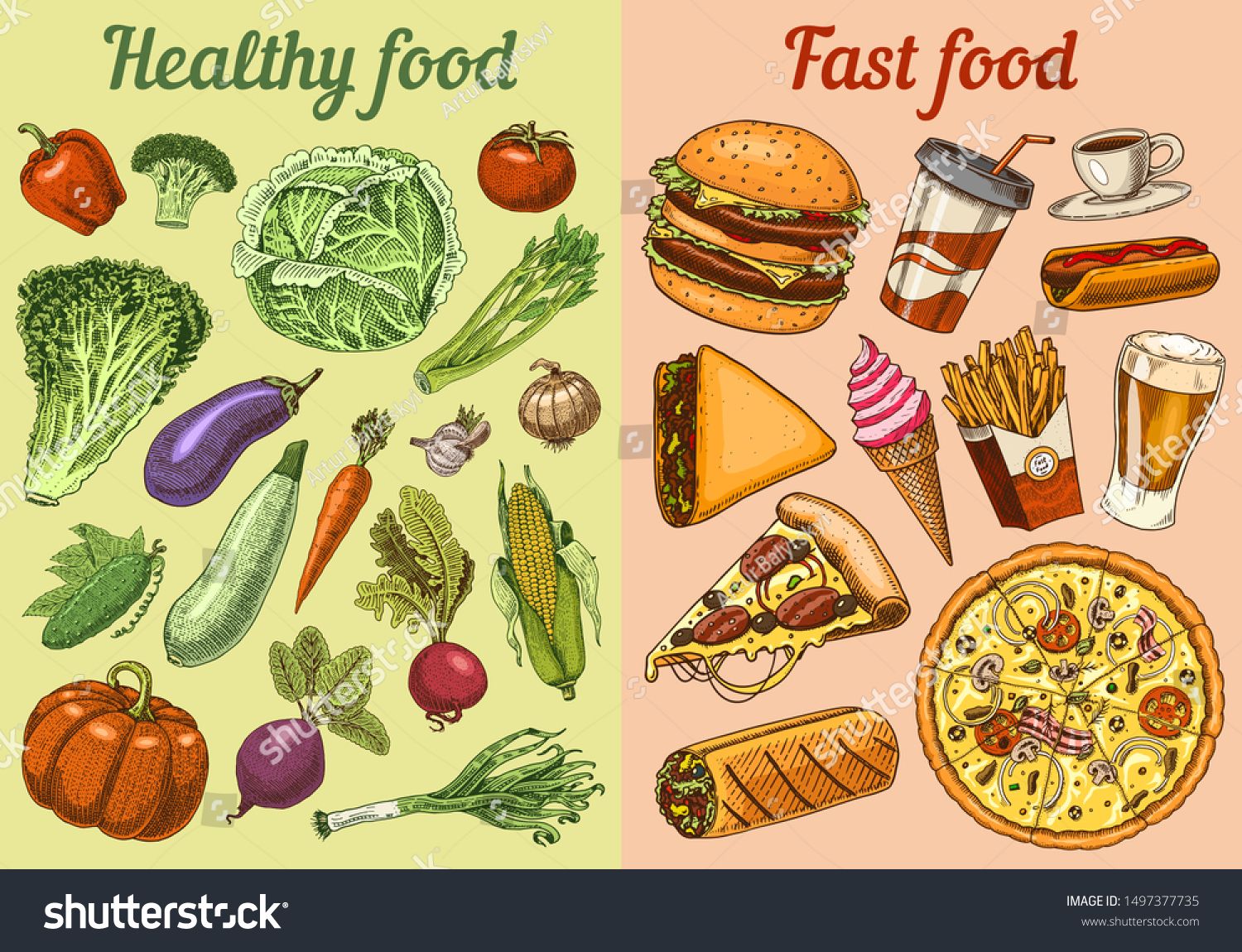
Table of Contents
Introduction
Embarking on a journey towards a healthier lifestyle is not just about shedding excess pounds; it’s about adopting habits that promote overall well-being. If you’re looking to lose weight and feel great, incorporating these healthy lifestyle tips into your daily routine can make a significant difference. I’m excited to divulge 8 top-notch healthy lifestyle tips that have assisted me in dropping 20 pounds.
Prioritize Nutrient-Dense Foods

Nutrient-dense foods are those that are packed with vitamins, minerals, fiber, and other beneficial compounds that are vital for overall health and well-being. These foods offer numerous health benefits and can help support various bodily functions, including metabolism, immune function, and energy production.
When you prioritize nutrient-dense foods, you’re choosing options that offer the most nutritional bang for your buck, so to speak. Instead of filling up on empty calories from processed foods, sugary snacks, or high-fat foods with little nutritional value, you opt for whole, unprocessed foods that nourish your body and provide essential nutrients without excess calories.
Examples of nutrient-dense foods include:
- Fruits and vegetables: Ensure your diet is packed with a diverse array of colorful fruits and vegetables, as they offer a wealth of essential vitamins, minerals, antioxidants, and fiber crucial for your overall health and well-being.
- Lean proteins: Foods such as poultry, fish, tofu, beans, lentils, and lean cuts of meat are excellent sources of protein, which is essential for building and repairing tissues, supporting muscle growth, and maintaining a healthy metabolism.
- Whole grains: Whole grains like brown rice, quinoa, oats, barley, and whole wheat provide fiber, vitamins, minerals, and complex carbohydrates that fuel your body and keep you feeling full and satisfied.
- Healthy fats: Foods rich in healthy fats, such as avocados, nuts, seeds, and olive oil, provide essential fatty acids that support brain health, reduce inflammation, and promote heart health.
- Dairy or dairy alternatives: Options like low-fat milk, yogurt, and cheese, as well as fortified plant-based alternatives like almond milk or soy yogurt, offer calcium, vitamin D, and other nutrients important for bone health.
By prioritizing these nutrient-dense foods in your diet, you can optimize your nutrition intake while managing your weight more effectively. These foods not only provide essential nutrients but also help you feel satisfied and energized, making it easier to maintain a healthy eating pattern in the long run.
Stay Hydrated

Water plays a vital role in supporting various bodily functions, such as maintaining body temperature, lubricating joints, transporting essential nutrients, and flushing out toxins from the body. When you stay hydrated, you ensure that your body can perform these functions optimally, which is crucial for maintaining good health.
Here are some key points to consider when it comes to staying hydrated:
- Fluid Balance: Your body continuously loses water through various processes such as sweating, urination, and breathing. To maintain proper hydration, it’s essential to replenish these lost fluids by drinking an adequate amount of water and other hydrating beverages.
- Thirst Signals: Thirst is your body’s way of signaling that it needs more fluids. However, relying solely on thirst may not always be sufficient, especially in situations where you’re physically active, exposed to hot weather, or experiencing illness. Make a conscious effort to stay hydrated by regularly consuming fluids throughout the day, regardless of whether you feel thirsty or not.
- Hydration Needs: The amount of water you need can vary depending on factors such as age, gender, body size, activity level, and environmental conditions. As a general guideline, aim to drink at least eight 8-ounce glasses of water per day, but adjust your intake based on your individual needs and circumstances.
- Hydrating Beverages: While water is the best choice for staying hydrated, other beverages such as herbal tea, infused water, coconut water, and low-sugar sports drinks can also contribute to your fluid intake. However, be mindful of sugary drinks, caffeinated beverages, and alcohol, as they can have diuretic effects and may contribute to dehydration if consumed in excess.
- Signs of Dehydration: It’s important to recognize the signs of dehydration, which can include thirst, dry mouth, dark urine, fatigue, dizziness, and headache. If you experience these symptoms, increase your fluid intake and seek shade or cool environments to prevent further dehydration.
- Special Considerations: Certain factors, such as pregnancy, breastfeeding, illness, physical activity, and hot weather, may increase your hydration needs. Be mindful of these factors and adjust your fluid intake accordingly to ensure adequate hydration.
By staying hydrated, you support your body’s overall function and promote optimal health. Make it a habit to drink water regularly throughout the day, and pay attention to your body’s signals to ensure you’re meeting your hydration needs. With proper hydration, you’ll feel more energized, focused, and ready to tackle the day ahead.
Take a loot at this AQUAFIT Half Gallon Water Bottle from Amazon to ensure you stay hydrated throughout the day.
Incorporate Regular Exercise

Engaging in consistent physical activity provides a wide range of advantages for both your physical well-being and mental health. By incorporating physical activity into your daily routine, you can improve your cardiovascular health, build strength and endurance, manage weight, boost mood, and reduce the risk of chronic diseases including conditions like heart disease, diabetes, and specific forms of cancer.
Here are some key points to consider when it comes to incorporating regular exercise into your lifestyle:
- Types of Exercise: There are various types of exercises you can incorporate into your routine, including cardiovascular exercises (e.g., walking, jogging, cycling, swimming), strength training (e.g., weightlifting, resistance band exercises), flexibility exercises (e.g., stretching, yoga, Pilates), and balance exercises (e.g., Tai Chi, stability ball exercises). Aim for a combination of different types of exercise to reap the most benefits.
- Frequency and Duration: Aim to engage in moderate-intensity aerobic exercise for at least 150 minutes per week or vigorous-intensity aerobic exercise for at least 75 minutes per week, spread out over several days. Additionally, include strength training exercises targeting major muscle groups on two or more days per week. As you progress in your fitness journey, gradually boost the duration and intensity of your workouts to match your improved level of fitness.
- Find Activities You Enjoy: Exercise doesn’t have to feel like a chore. Find activities that you enjoy and that fit into your lifestyle, whether it’s taking a dance class, playing a sport, hiking in nature, or joining a fitness group. When you enjoy the activities you’re doing, you’re more likely to stick with them in the long run.
- Set Realistic Goals: Set achievable goals for yourself based on your fitness level, interests, and schedule. Whether your goal is to lose weight, improve cardiovascular health, increase muscle strength, or reduce stress, establish specific, measurable, and realistic goals that you can work towards over time.
- Make it a Habit: Maintaining a consistent exercise routine is crucial. Incorporate regular workouts into your weekly schedule and prioritize them as essential commitments.
- Stay Motivated: Find ways to stay motivated and accountable, whether it’s exercising with a friend or family member, tracking your progress, rewarding yourself for reaching milestones, or seeking support from a fitness coach or community. Celebrate your successes along the way and remind yourself of the benefits of regular exercise for your overall health and well-being.
By incorporating regular exercise into your lifestyle, you can improve your physical fitness, enhance your mood, and enjoy a higher quality of life. Start small, stay consistent, and gradually build upon your efforts to create a sustainable exercise routine that supports your health and fitness goals for the long term.
Discover this THE GYM PEOPLE Thick High Waist Yoga Pants from Amazon!
Practice Portion Control

It’s crucial to differentiate between the size of portions and servings. Portion sizes can vary widely and may be influenced by factors such as plate size, food packaging, and social norms. Serving sizes, on the other hand, are standardized measurements provided on food labels to guide consumers about appropriate portion sizes for a particular food item.
- Benefits of Portion Control: Practicing portion control offers several benefits for overall health and weight management. Managing the size of your portions helps curb overindulgence, control calorie consumption, and support a healthy weight. Portion control can also help regulate blood sugar levels, improve digestion, and reduce the risk of chronic diseases such as obesity, diabetes, and heart disease.
- Strategies for Portion Control: There are several strategies you can use to practice portion control effectively:
-
Use smaller plates and bowls: Using smaller dishware can help control portion sizes by visually tricking your brain into thinking you’re eating more than you actually are.
-
Measure portions: Use measuring cups, spoons, or a food scale to measure serving sizes, especially for foods like grains, proteins, and snacks. This practice can enhance your awareness of suitable portion sizes, reducing the likelihood of overindulgence.
-
Practice mindful eating: Pay attention to hunger and fullness cues, and eat slowly to give your body time to register feelings of satisfaction. Steer clear of distractions like TV or electronic devices during meals to prevent unconscious overconsumption.
-
Divide portions before eating: When dining out or preparing meals at home, divide larger portions into smaller servings before eating. This can help prevent the temptation to eat larger portions simply because they’re available.
-
Fill up on vegetables: Incorporate plenty of non-starchy vegetables into your meals to bulk up your plate without adding excess calories. Vegetables are low in calories and high in fiber, helping you feel full and satisfied.
-
Be mindful of liquid calories: Be cautious of liquid calories from beverages such as sugary sodas, fruit juices, and alcoholic drinks. These beverages can contribute to excess calorie intake without providing feelings of fullness, making it easy to consume more calories than needed.
-
Practice moderation: Enjoy your favorite foods in moderation, but be mindful of portion sizes. You don’t have to completely eliminate certain foods from your diet, but be aware of how much you’re consuming and how often.
- Consistency and Practice: Like any habit, practicing portion control requires consistency and practice. It may take time to adjust to smaller portion sizes and develop a sense of what constitutes an appropriate portion for you. Be patient with yourself and focus on making gradual changes to your eating habits over time.
By practicing portion control, you can enjoy a balanced diet, maintain a healthy weight, and support overall health and well-being. Incorporate these strategies into your daily routine to make portion control a sustainable habit that promotes a healthy relationship with food.
Explore this Convenient Food Storage Containers on Amazon! They’re designed to assist in managing your meal portions effectively.
Get Adequate Sleep

Sleep plays a vital role in regulating hormones that influence appetite and metabolism. Aim for seven to nine hours of quality sleep each night to support weight loss and overall health. Create a relaxing bedtime routine, minimize screen time before bed, and ensure your sleep environment is conducive to restful sleep.
- Benefits of Adequate Sleep: Getting enough sleep is essential for various aspects of health, including:
Physical health: Adequate sleep supports immune function, metabolism, hormone regulation, and cardiovascular health. It also promotes muscle repair and growth, enhances athletic performance, and reduces the risk of chronic diseases such as obesity, diabetes, and heart disease.
Mental health: Sleep plays a crucial role in cognitive function, memory consolidation, learning, and emotional regulation. It helps improve focus, concentration, and decision-making abilities while reducing the risk of mood disorders such as depression and anxiety.
Overall well-being: Quality sleep contributes to overall well-being by promoting feelings of alertness, vitality, and emotional stability. It enhances productivity, creativity, and problem-solving skills while reducing irritability, stress, and fatigue.
- Factors Affecting Sleep Quality: Several factors can influence the quality and duration of sleep, including:
Sleep hygiene: Establishing a consistent sleep schedule, creating a relaxing bedtime routine, and optimizing your sleep environment (e.g., comfortable mattress, dark, quiet, and cool room) can improve sleep quality.
Stress and anxiety: Psychological factors such as stress, anxiety, and worry can interfere with sleep onset and maintenance. Practicing relaxation techniques, such as deep breathing, meditation, or progressive muscle relaxation, can help alleviate stress and promote better sleep.
Diet and lifestyle: Consuming caffeine, nicotine, or alcohol close to bedtime, as well as eating heavy meals or engaging in stimulating activities, can disrupt sleep patterns. It’s essential to adopt healthy lifestyle habits, such as limiting caffeine and alcohol intake, avoiding large meals before bed, and exercising regularly to support quality sleep.
Sleep disorders: Certain sleep disorders, such as insomnia, sleep apnea, restless legs syndrome, and narcolepsy, can impair sleep quality and duration. If you suspect you have a sleep disorder, it’s important to consult with a healthcare professional for proper evaluation and treatment.
- Tips for Improving Sleep Quality: To ensure you get adequate sleep and wake up feeling refreshed and rejuvenated, consider implementing the following tips:
Maintain a steady sleep routine by adhering to consistent bedtime and wake-up times every day, including weekends.
Establish a calming bedtime ritual to cue your body that it’s time to unwind and get ready for rest.
Limit exposure to screens (e.g., smartphones, computers, TVs) before bedtime, as blue light can interfere with melatonin production and disrupt sleep.
Create a sleep-friendly atmosphere in your bedroom by ensuring it’s dark, quiet, and comfortably cool.
Avoid caffeine, nicotine, and alcohol close to bedtime, as they can disrupt sleep patterns and impair sleep quality.
Engage in regular physical activity during the day, but avoid vigorous exercise close to bedtime, as it can stimulate the body and make it difficult to fall asleep.
Consider relaxation techniques such as deep breathing, meditation, or gentle stretching to calm the mind and body before bedtime.
By prioritizing adequate sleep and adopting healthy sleep habits, you can support your physical and mental health, enhance your overall well-being, and enjoy a better quality of life. Make sleep a priority in your daily routine, and reap the benefits of feeling well-rested and rejuvenated each day.
Limit Processed Foods and Added Sugars

Processed foods and added sugars can contribute to weight gain and various health issues. Minimize your intake of these foods by opting for whole, unprocessed options whenever possible. Read food labels carefully and choose products with minimal added sugars, artificial ingredients, and preservatives.
- Types of Processed Foods: Processed foods can range from minimally processed items like canned beans or frozen vegetables to highly processed products like sugary cereals, packaged snacks, fast food, and ready-to-eat meals. These foods often contain high amounts of refined carbohydrates, unhealthy fats, sodium, and additives, while lacking essential nutrients like vitamins, minerals, and fiber.
- Health Risks of Processed Foods: Consuming a diet high in processed foods has been linked to various health risks, including:
Weight gain and obesity: Processed foods are often high in calories, sugar, and unhealthy fats, which can contribute to excess calorie intake and weight gain over time.
Increased risk of chronic diseases: Diets high in processed foods have been associated with an increased risk of chronic diseases such as type 2 diabetes, heart disease, stroke, and certain types of cancer.
Poor nutrition: Processed foods tend to be low in essential nutrients like vitamins, minerals, and fiber, which are important for overall health and well-being. Consuming these foods regularly can lead to nutrient deficiencies and poor overall nutrition.
Negative impact on metabolism: Highly processed foods often contain high amounts of added sugars and refined carbohydrates, which can lead to spikes and crashes in blood sugar levels, insulin resistance, and metabolic dysfunction.
- Understanding Added Sugars: Added sugars are sugars and syrups that are added to foods and beverages during processing or preparation to enhance flavor, texture, or shelf life. These sugars provide empty calories and little to no nutritional value, contributing to excess calorie intake and negative health effects when consumed in large amounts.
- Tips for Limiting Processed Foods and Added Sugars: To reduce your intake of processed foods and added sugars and improve your overall diet quality, consider implementing the following tips:
Choose whole, unprocessed foods: Opt for whole foods such as fruits, vegetables, whole grains, lean proteins, and healthy fats that are minimally processed and provide essential nutrients in their natural form.
Read food labels: Check the ingredient list and nutrition label on packaged foods to identify added sugars, unhealthy fats, and artificial additives. Choose products with shorter ingredient lists and avoid those with added sugars, high fructose corn syrup, hydrogenated oils, and artificial flavors or preservatives.
Cook meals at home: Prepare homemade meals using fresh, whole ingredients whenever possible. Cooking at home allows you to control the ingredients and cooking methods used, making it easier to avoid processed foods and added sugars.
Limit sugary beverages: Cut back on sugary beverages such as soda, sweetened tea, energy drinks, and fruit juices, which are major sources of added sugars and empty calories. Opt for water, herbal tea, sparkling water, or unsweetened beverages instead
Choose healthier alternatives: Instead of highly processed snacks and desserts like cookies, chips, and candy, opt for healthier alternatives such as fresh fruit, nuts, yogurt, air-popped popcorn, or homemade energy bars made with whole ingredients.
Plan ahead: Plan your meals and snacks in advance, and stock your pantry and refrigerator with nutritious, whole foods to make healthier choices easier and more convenient.
By limiting your intake of processed foods and added sugars and focusing on whole, nutrient-dense foods, you can improve your diet quality, support your overall health and well-being, and reduce your risk of chronic diseases. Make gradual changes to your eating habits and lifestyle to promote long-term health and vitality.
Be Patient and Persistent
Keep in mind that achieving lasting weight loss requires patience and ongoing dedication. Be patient with yourself and focus on making gradual progress rather than striving for perfection. Embrace setbacks as learning opportunities and stay committed to your healthy lifestyle habits. With dedication and perseverance, you’ll achieve your weight loss goals and enjoy long-term success.
- Understanding Patience: Patience is the ability to remain calm and tolerant in difficult or challenging situations, especially when progress may seem slow or setbacks occur. It involves accepting that achieving meaningful results takes time and effort, and being willing to wait for the desired outcome without becoming discouraged or frustrated.
- Understanding Persistence: Persistence is the quality of continuing to pursue your goals or objectives despite obstacles, setbacks, or failures. It involves staying committed to your aspirations and taking consistent action towards achieving them, even when faced with difficulties or setbacks along the way.
- The Importance of Patience and Persistence:
-
Achieving Long-Term Goals: Many goals, especially those related to personal growth, career advancement, or lifestyle changes, require sustained effort and perseverance over an extended period. Patience and persistence are essential for staying motivated and committed to your goals, even when progress may seem slow or challenging.
-
Overcoming Obstacles: Life is full of obstacles, setbacks, and unexpected challenges that can hinder progress towards your goals. Patience allows you to stay calm and resilient in the face of adversity, while persistence enables you to keep moving forward and find creative solutions to overcome obstacles.
-
Building Resilience: Patience and persistence help build resilience, the ability to bounce back from setbacks and adapt to change. By cultivating these qualities, you develop a positive attitude and mindset that enables you to face challenges with confidence and resilience.
-
Maintaining Motivation: Progress towards your goals may not always be linear, and there may be times when you experience setbacks or lack motivation. Patience and persistence help you stay focused on your long-term vision, maintain a positive outlook, and keep taking action, even when faced with difficulties or setbacks.
-
Fostering Self-Improvement: Personal growth and self-improvement often require stepping out of your comfort zone, facing challenges, and embracing opportunities for learning and growth. Patience and persistence are essential for navigating the ups and downs of the journey towards self-improvement and making meaningful progress over time.
- Tips for Practicing Patience and Persistence:
-
Set Realistic Expectations: Be realistic about the time and effort required to achieve your goals, and avoid expecting instant results. Divide your objectives into smaller, achievable tasks, and take pride in reaching each significant milestone on your journey.
-
Stay Flexible: Be open to adjusting your approach and adapting to changing circumstances or unexpected challenges. Flexibility allows you to find alternative solutions and keep moving forward, even when things don’t go as planned.
-
Focus on Progress, Not Perfection: Instead of striving for perfection, focus on making progress towards your goals, no matter how small. Recognize and celebrate your achievements, and use setbacks or failures as opportunities for learning and growth.
-
Practice Self-Compassion: Show yourself kindness and understanding, particularly during tough times or when confronted with setbacks. Treat yourself with the same patience and understanding that you would offer to a friend, and remember that setbacks are a natural part of the journey towards success.
-
Seek Support: Surround yourself with supportive friends, family members, mentors, or peers who can encourage and motivate you during challenging times. Sharing your goals and progress with others can help hold you accountable and provide valuable encouragement and perspective.
By cultivating patience and persistence, you can overcome obstacles, stay motivated, and achieve your goals, leading to a more fulfilling and successful life. Embrace the journey, stay focused on your long-term vision, and trust in your ability to overcome challenges and achieve success through patience and persistence.
Conclusion
Achieving and maintaining a healthy weight is not just about following a strict diet or intense workout regimen; it’s about adopting lifestyle changes that promote overall well-being. By prioritizing nutrient-dense foods, staying hydrated, exercising regularly, and managing stress, you can reach your weight loss goals and improve your quality of life. Embrace these healthy lifestyle tips, make them a part of your daily routine, and enjoy the journey towards a healthier, happier you.

Pingback: Revitalize Your Midsection: 10 Embracing Recipes of Detox Water for Belly Fat Loss - EAT PRAY LOVE TO LIVE
Pingback: Meal Prep for Busy Professionals: Streamline Your Week with Smart Strategies - EAT PRAY LOVE TO LIVE
Pingback: 5 Lazy Girl Workouts Hacks: Get Fit While Netflix Binging! - EAT PRAY LOVE TO LIVE
Pingback: High-Value Woman Empowerment: 13 Key Traits of Confidence - EAT PRAY LOVE TO LIVE